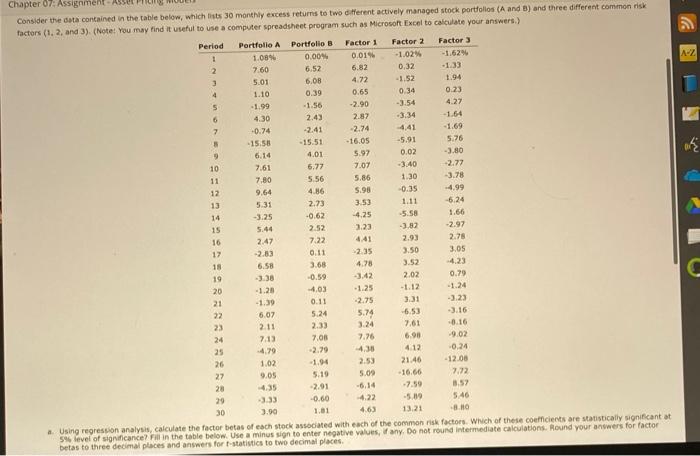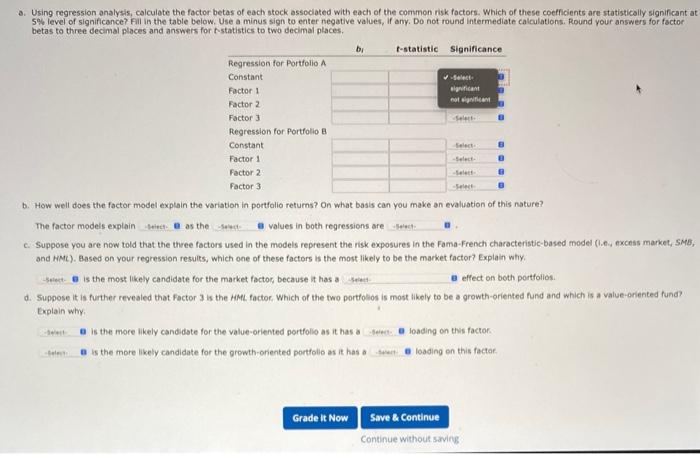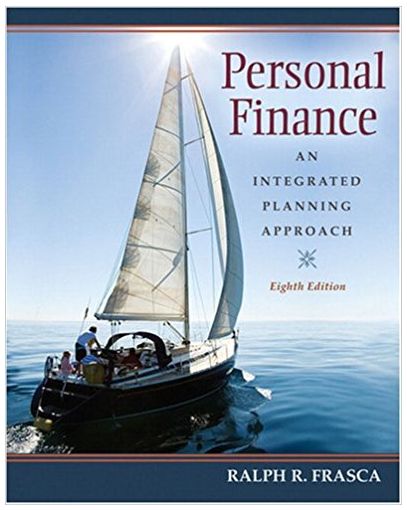Consider the data contained in the table below, which fits 30 monthly encess returns to two different actively managed stock portfollos (A and B) and three different common risk factors (1, 2, and 3). (Note: You may find it useful th use a comouler spreadsheet program such as Microsort Excol to calculate your answers.) Sang level of significance? fili in the table below. Use a minus sign to enter negative values, if any, Do not round intermediate calculations. hound your anvers for factor petas to three decimal places and answers for t-stativtica to two decimal places. a. Using regression analysis, calculate the factor betas of each stock associated with each of the contmon risk factors. Which of these coefficients are statistically significant at 5\% level of significance? Fil in the table below. Use a minus sign to enter negative values, if amy. Do not round intermediate calculations. Round your answers for factor betas to three decimal places and answers for tstatistics to two decimal places. b. How well does the factor model exptain the variation in portfolio returns? On what basis can you make an evaluation of this nature? The factor models explain as the values in both regressions are c. Suppose you are now told that the three factors used in the models represent the risk exposures in the Fama-French characteristic-based model (i.f.4 excess market, sMB, and HMC). Based on your regression results, which one of these factors is the most likely to be the market factor? Explain why. is the most likely candidate for the market factor, because it has a effect on both portfolios. d. Suppose it is further revealed that Factor 3 is the HML factor. Which of the two portfolios is most likely to be a growth-oriented fund and which is a value-oriented fund? Explain why. is the more likely candidote for the value-oriented portfolio as it has a loading on this factor. is the more likely candidate for the growth-onented portfolis as it has a loading on this factar. fug poce you dre futw ti erect facturs whed in thin resdets ret. fotare fiotein why. 1 Cmplen wti tactor li fxytain whivi tincter motelt expiain factar pisicit esplisi. fustor ? Cyolain whel whin is a walue-ciecert fund fopisin mhil. Consider the data contained in the table below, which fits 30 monthly encess returns to two different actively managed stock portfollos (A and B) and three different common risk factors (1, 2, and 3). (Note: You may find it useful th use a comouler spreadsheet program such as Microsort Excol to calculate your answers.) Sang level of significance? fili in the table below. Use a minus sign to enter negative values, if any, Do not round intermediate calculations. hound your anvers for factor petas to three decimal places and answers for t-stativtica to two decimal places. a. Using regression analysis, calculate the factor betas of each stock associated with each of the contmon risk factors. Which of these coefficients are statistically significant at 5\% level of significance? Fil in the table below. Use a minus sign to enter negative values, if amy. Do not round intermediate calculations. Round your answers for factor betas to three decimal places and answers for tstatistics to two decimal places. b. How well does the factor model exptain the variation in portfolio returns? On what basis can you make an evaluation of this nature? The factor models explain as the values in both regressions are c. Suppose you are now told that the three factors used in the models represent the risk exposures in the Fama-French characteristic-based model (i.f.4 excess market, sMB, and HMC). Based on your regression results, which one of these factors is the most likely to be the market factor? Explain why. is the most likely candidate for the market factor, because it has a effect on both portfolios. d. Suppose it is further revealed that Factor 3 is the HML factor. Which of the two portfolios is most likely to be a growth-oriented fund and which is a value-oriented fund? Explain why. is the more likely candidote for the value-oriented portfolio as it has a loading on this factor. is the more likely candidate for the growth-onented portfolis as it has a loading on this factar. fug poce you dre futw ti erect facturs whed in thin resdets ret. fotare fiotein why. 1 Cmplen wti tactor li fxytain whivi tincter motelt expiain factar pisicit esplisi. fustor ? Cyolain whel whin is a walue-ciecert fund fopisin mhil















